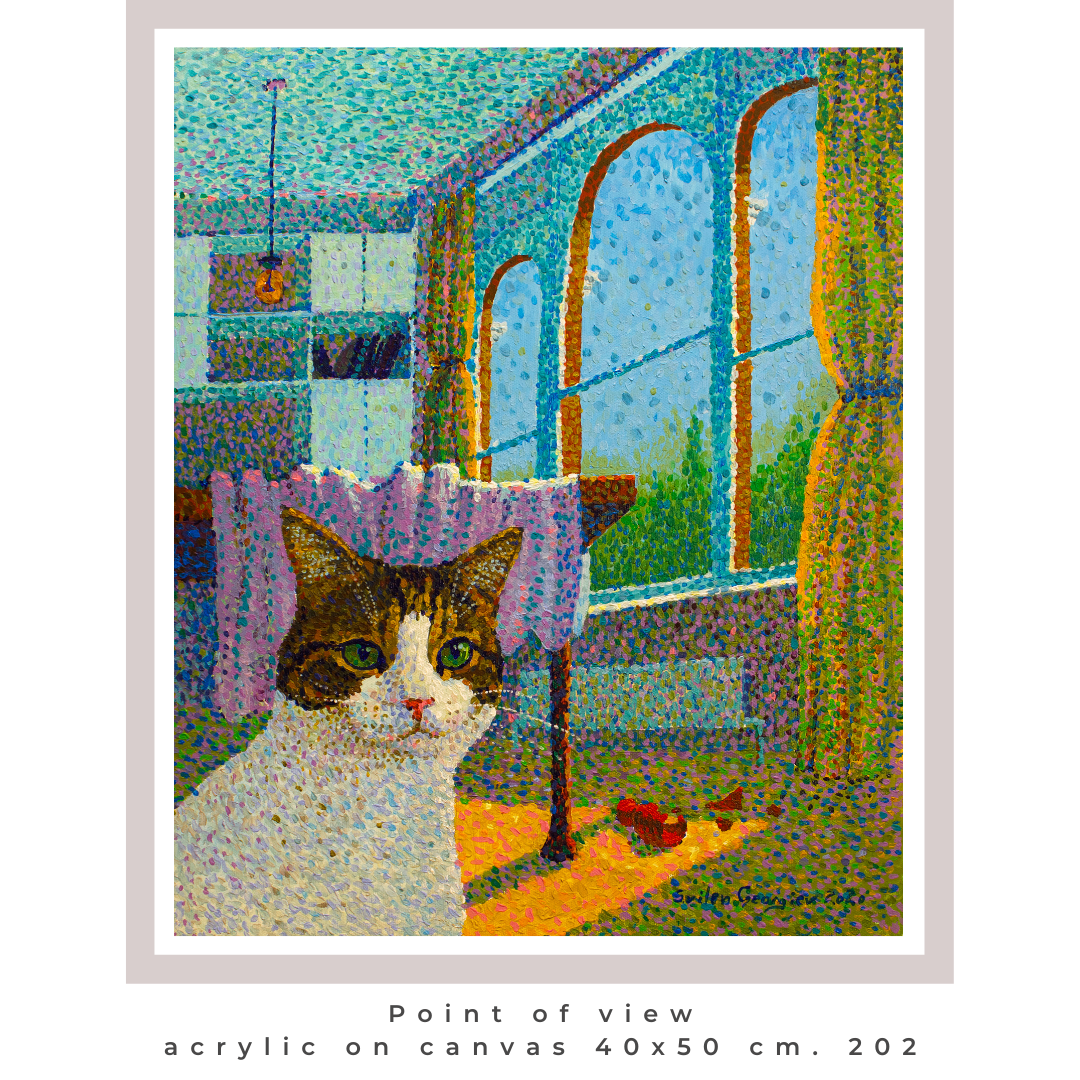The Point and Us: Pointillism That Makes Sense
When we gaze at the night sky, we're all certain we see small, shining dots we call stars. Yes, we're all observing points, but are they really just points? A bird flying in the sky also appears as a point, but we know it’s a bird...
The laws of linear perspective apply in our world, both on Earth and throughout the known and unknown universe. The principle of perspective and the change in the size of an object depend on the distance from which we observe it. Depending on the size of the form and the viewpoint, the perceived size of the object varies. Human perception has a specific and limited scale of vision. If we observe a star with the naked eye, we see it as a small, shining point. However, when using magnifying instruments, we might discover that this point could actually be an entire galaxy, composed of billions of suns and planets.
The law of linear perspective states that the size of the observed object depends on the distance from the viewpoint. All parallel and non-frontal lines in space converge at a single point on the observer's horizon. It is important to note that the observer's horizon is strictly specific and unique to the individual. Each different perspective has a different horizon. To reiterate, all non-frontal observed lines converge at a single point on the horizon, a point that might be billions of times larger than our own galaxy. The same is true for the microscopic world. The smaller the form relative to the observer, the more it resembles a point. 1< O <1, (1 – object, O – observer, 1 – object).
With the naked eye, we cannot even see the shape of cells, atoms, or quarks, but even with special magnifying instruments, we find that they appear as points. When magnified, these points reveal their true form. Light itself is a collection of points that behave both as particles and waves. Interacting with forms and objects in nature, and reflecting into our eyes, these tiny points of light create the world we see. Once again, everything begins from a point.
A point may seem insignificant and small, but reality tells a different story. If we consider a virus, which is even smaller than a point, it can damage or even destroy a large body, which is a collection of trillions of points (cells). A toxic chemical introduced into a body of trillions of points can also lead to a chain reaction of destruction. A single point, called a sperm cell, interacting with another point, called an egg cell, leads to the formation of trillions of meticulously arranged cells that we recognise as a human organism (as an example). The interaction of chemical elements can result in complex compounds or even matter itself. If a supernova explodes somewhere in the cosmos, although we see it as a point, the consequences can extend for billions of light years.
The point is not insignificant. It is an integral part of the whole, important both at the micro and macro levels. This is all part of my concept of the pointillism style. Pointillism builds the pictorial space through the point. Each point interacts with the one next to it to create the image or shade needed to express the idea, meaning, and sensation in the painting. The human eye is imperfect and has the ability to generalise details observed from a distance. This allows pointillism to enrich the nuances in the painting with numerous different points, which will subsequently create a certain perception of colour. In reality, different shades exist within every observed colour. The development of digital photography sheds a lot of light on this. Digital photography, like the monitors we use, also employs the idea of pointillism. Each monitor is made up of small points that interact with each other. Each pixel in a photograph carries its specific shade to be part of the overall image. If you zoom in on a photo on your computer, you will see these pixels, these points...
The richer the nuances in each point, the richer the depicted colour tone. If the points are small, the overall picture will have smoother and softer shapes, shades, and transitions from tone to tone. This is how the resolution of your monitors works. The more pixels there are, the more realistic and clear the image you have.
However, in art, things are different. The goal of pointillism is not to create a copy of the observed image. The aim of pointillism is to evoke sensations and thoughts in the viewer through the vibration created by the points in the painting. This gives the brain the opportunity to play with the colour and provoke the imagination. In art, it is crucial to provoke imagination and lead to certain insights about the idea. The idea and imagination are the arousal of electronic impulses in the brain, sparks of light between certain neural connections. These sparks in our brain are points of light that interact with other points—cells that create images, thoughts, and feelings in the vast conglomerate known as the human brain.
The point is extremely important and significant in our visible and invisible world. The point is the beginning of everything we know.
























